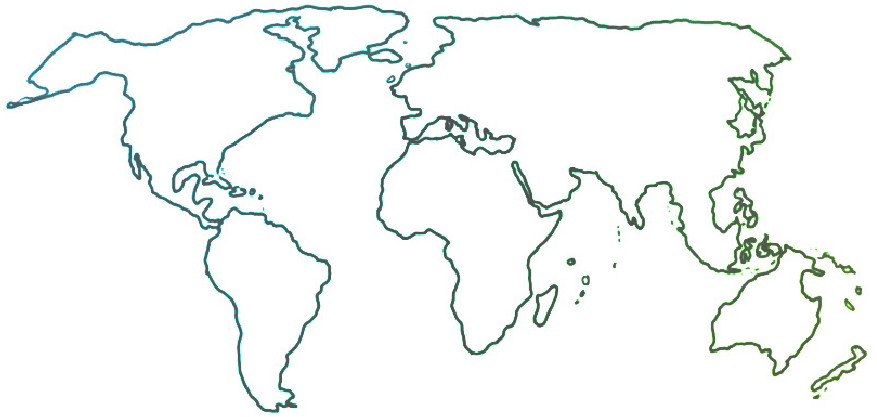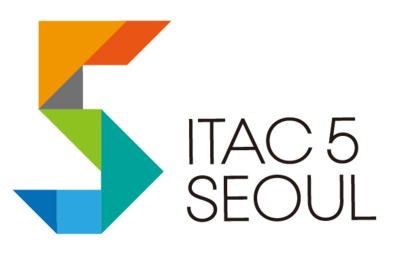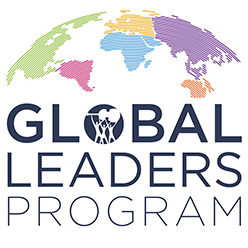

News & Resources
EDITORIAL: Reaching the Sistema Tipping Point
 Tipping points. There is a whole library of theories about them, not to mention a bestseller with that title by Malcolm Gladwell. This question affects, even haunts, us all: When will the El Sistema-inspired movement reach its tipping point?
Tipping points. There is a whole library of theories about them, not to mention a bestseller with that title by Malcolm Gladwell. This question affects, even haunts, us all: When will the El Sistema-inspired movement reach its tipping point?
A tipping point is the moment when an idea or movement has built up enough awareness, impact and support that one small additional influence tips the balance and permanently changes the whole situation. All young movements hunger to get to that tipping point after which everything is different.
Once our Sistema movement reaches its tipping point, things are likely to be different. We won’t meet people inside the arts who don’t know what El Sistema is. We will have different conversations with funders (and with an expanded range of funders), after the tipping point. Government agencies and corporations will be interested in partnering and funding our programs because a wider populace senses the value of this work. Sounds good, right?
So how do we help get this movement to the tipping point? The obvious answer is that everything you are currently doing well in your program contributes to reaching this point. There is no tipping without strong, growing programs that accomplish what they claim—transformational impact on kids who live in difficult situations. So, by sustaining and strengthening your program, by giving it as much visibility as possible, by developing vibrant young people who succeed in life, you are making your key contribution to this movement.
There are additional things you can do, and that’s where many programs fall short. People feel too busy to do more. Obviously, our colleagues are stretched with busyness, but without something more that connects our programs into a wider collective force, we delay our movement’s progress toward that tipping point. Here are a few additional things you can do that would bring us closer to a tipping point. These suggestions don’t cost money; some don’t even take more than a few minutes of time. But they are steps that build momentum.
Join the communications network. You can actively share your organization’s news and learning with others. It takes so little time to let The World Ensemble know about your new learning, new discoveries that will help others, new projects that might spark ideas for others. Also, be sure to read each issue of The WE, and share it widely with everyone connected to your program. We have to build awareness within our movement to be more effective in engaging a wider audience.
Ambassadors. You can follow the student Ambassadors for The WE who will be announced and start their work soon. These responsible students from programs around the world will share news of their programs, will pass on bits of interest to friends, will be in direct touch with students in programs in other countries. Empower your most committed students to a next level of leadership, and have them be in touch with the Ambassadors.
Identification. Whenever you are asked about your program, include a reference to being part of a larger network of programs. Always. Every single time. Make it an automatic habit to identify your program in the context of hundreds of similar programs—how can we raise awareness of the remarkable size of our movement if we don’t place our programs in that context? For example, if your program is in Europe: “My program is part of a network of programs in 27 countries in Europe, and part of a movement of 66 countries around the world.” Those who are a part of Sistema Europe, Sistema England, El Sistema USA or Superar should be sure to mention these organizations whenever they tell people about their program. You should always mention how many other programs there are within your own country – they are not your competitors, they are your colleagues. We are stronger, more visible and more powerful together.
The Sistema movement is a significant new player in a larger global arts for social change movement. This movement is rising as a whole, around the world, and we are not actively aware of, or connected to, this larger movement. Here are three emerging networks that are directly connected to our work—we move closer to the tipping point as we connect to this greater whole.
- The International Teaching Artist Collaborative. The first global network of the artists involved in social change through the arts. Growing out of the International Teaching Artist Conferences, the just-launched Collaborative will run all year round, building this community. To join the free mailing list, write manager Madeleine McGirk.
- The Community Arts Lab (CAL) is a new unit within a European foundation that is carefully nurturing the global network of social change through the arts programs and connectors; they have undertaken the first mapping project to understand the existing structure of this global movement.
- In the U.S., there are hundreds of excellent programs that function on their own, but are beginning to recognize common identity under a banner of Creative Youth Development (CYD). This national CYD initiative includes many active Sistema-inspired programs, and is beginning to have national identity and the beginnings of influence. They also are reaching out to make connections with international colleagues, with the recognition that it is a global movement. The organizations leading this movement (Massachusetts Cultural Council, National Guild for Community Arts Education, Americans for the Arts) have produced a plan, a progress report and other resources. And one member, the Boston Youth Arts Evaluation Project, has created a handbook and a workbook for evaluating learning in CYD projects.
- The new OF/BY/FOR ALL Network is gathering an international group of cultural and civic organizations that commit to deep community involvement in their work. Their goal is “to change the way people design, manage, fund, and engage with community organizations, intending to spark change by encouraging organizations to adopt new practices to become OF, BY, and FOR their communities.” There are no music organizations in their membership yet.
As we find the time to become more aware of our wider field and connections to other rising endeavors, as we develop habits of communication about our learning and benefit from the learning of others, we move closer to the tipping point. Everything changes after that—as it did for The Santa Cruz Museum of Art and History. They were almost out of business in 2011, until Nina Simon came on board. She opened up their practices, shared their work with colleagues and partners, and then launched the OF/BY/FOR ALL network—she’s finding a world of influence by reaching out to like-spirited colleagues. Read the story of Philadelphia’s local ecosystem in the U.S. that is aligning all its local music education programs, including the schools and a local Sistema program, into collective endeavors. It began with simply sharing performance schedules, to be helpful to one another, and is growing into pathways that help their neediest and most motivated learners. Read the story in the lead article in this month’s issue of The Ensemble.
There is no tipping point if we go solo; but we change everything together.
Author: Eric Booth, Publisher, The World Ensemble
Date Published: 27 October 2018
EDITORIAL: Llegando al punto clave de El Sistema
Por Eric Booth, Editor, The World Ensemble
Los puntos claves. Hay toda una biblioteca de teorías sobre ellos, sin mencionar al best seller con ese título, escrito por Malcolm Gladwell. La pregunta nos afecta, hasta nos persigue a todos: ¿Cuándo llegará el movimiento de El Sistema a su punto clave?
Un punto clave es el momento cuando una idea o un movimiento ha acumulado suficiente conciencia, impacto, y apoyo que una pequeña influencia más inclina la balanza y cambia toda la situación permanentemente. Todos los movimientos jóvenes anhelan este punto clave (en inglés “tipping point,” “punto de volcamiento”), después del cual todo cambia.
Una vez que nuestro movimiento de El Sistema llegue a su punto clave, las cosas probablemente serán diferentes. No encontraremos gente en las artes que no sepa qué es El Sistema. Tendremos conversaciones diferentes con nuestros financiadores (y con un rango expandido de financiadores]) después del punto clave. Las agencias del gobierno y las corporaciones se interesarán en colaborar y financiar nuestros programas porque una población más amplia sentirá el valor del trabajo. ¿Suena bien, cierto?
¿Entonces cómo ayudamos al movimiento para que llegue al punto clave? La respuesta obvia es que todo lo que estás haciendo bien en este momento en tu programa contribuye al alcance de este punto. No hay volcamiento sin programas fuertes y crecientes que logran lo que aseguran— un impacto transformador sobre niños que viven en situaciones difíciles. Entonces, si sostienes y fortaleces tu programa, si le das la máxima visibilidad posible, si desarrollas a jóvenes vibrantes que tienen éxito en la vida, estás haciendo tu contribución clave a este movimiento.
Hay cosas adicionales que puedes hacer, y es ahí donde muchos programas no alcanzan. La gente se siente demasiado ocupada y que no puede hacer más. Obvio, nuestros colegas están muy atareados, pero sin algo más que conecte a nuestros programas a una fuerza colectiva más amplia, atrasamos el progreso del movimiento hacia aquel punto clave. Aquí hay unas cosas adicionales que puedes hacer para acercarnos más a un punto clave. Esas sugerencias no cuestan dinero; algunos sólo toman unos minutos de tiempo. Pero son pasos que van ganando fuerza.
Júntate a la red de comunicaciones. Puedes compartir activamente las noticias y los aprendizajes de tu organización con otros. Toma tan poco tiempo avisar a The World Ensemble sobre tu nuevo aprendizaje, tus nuevos descubrimientos que ayudarán a los demás, nuevos proyectos que podrían desatar ideas para otros. Además, no te olvides de leer cada edición del WE y compartirla con todos los que están conectados con tu programa. Debemos aumentar la conciencia dentro de nuestro movimiento para ser más eficaces en involucrar a un público más amplio.
Embajadores. Puedes seguir los estudiantes Embajadores para el WE, quienes pronto serán anunciados y empezarán su trabajo. Esos estudiantes responsables de programas de todo el mundo compartirán noticias de sus programas, pasarán cosas interesantes a los amigos, y estarán en contacto directo con estudiantes en programas en otros países. Empodera a tus estudiantes más comprometidos a un próximo nivel de liderazgo, y ponlos en contacto con los Embajadores.
Identificación. Cuando te pregunten sobre tu programa, incluye una referencia de que hace parte de una red más grande de programas. Siempre. Todas la veces. Vuélvelo un hábito automático identificar tu programa en el contexto de cientos de programas similares—¿cómo podemos despertar conciencia sobre el tamaño increíble de nuestro movimiento si no ponemos a nuestros programas en aquel contexto? Por ejemplo, si tu programa está en Europa: “Mi programa hace parte de una red de programas en 27 países en Europa, y de un movimiento de 66 países por todo el mundo.” Los que hacen parte de Sistema Europa, Sistema Inglaterra, El Sistema USA o Superar deberían fijarse en mencionar esas organizaciones en cualquier momento que cuentan a la gente sobre su programa. Deberías siempre mencionar cuántos otros programas hay dentro de tu propio país—no son tu competencia, son tus colegas. Somos más fuertes, más visibles, y más poderosos juntos.
El movimiento de El Sistema es un jugador nuevo y significativo en un movimiento global más grande de artes para el cambio social. Ese movimiento está creciendo en conjunto, por todo el mundo, y no estamos activamente conscientes de, ni conectados con, ese movimiento más grande. Aquí hay tres redes emergentes que tienen una conexión directa con nuestro trabajo—nos acercamos más al punto clave mientras nos conectamos a esta totalidad mayor.
El Colectivo Internacional de Artistas Formadores. La primera red global de artistas involucrados en el cambio social a través de las artes. Creada desde las Conferencias Internacionales de Artistas Formadores, este Colectivo, apenas lanzado, funcionará durante todo el año, construyendo esta comunidad. Para inscribirte a la lista de contactos gratuita, escribe al gerente Madeleine McGirk.
El Laboratorio de Artes Comunitarios (CAL) es una nueva unidad dentro de una fundación europea que está nutriendo cuidadosamente la red global de los programas y conectores que trabajan por el cambio social a través de las artes; han emprendido el primer proyecto de mapeo para comprender la estructura existente de ese movimiento global.
En los EE.UU. hay cientos de programas excelentes que funcionan solos, pero que empiezan a reconocer una identidad común bajo una bandera del Desarrollo Creativo Juvenil (CYD). La iniciativa nacional del CYD incluye a muchos programas activos de El Sistema, y empieza a tener una identidad nacional y una influencia inicial. También están forjando conexiones con colegas internacionales, reconociendo que es un movimiento global. Las organizaciones guiando ese movimiento (el Consejo Cultural de Massachusetts, el Gremio Nacional para la Educación Artística Comunitaria, y Americanos para las Artes) han producido un plan, un reporte de progreso, y otros recursos. Y un miembro, el Proyecto de Evaluación de las Artes Juveniles de Boston, ha creado un manual y un cuaderno de ejercicios para evaluar el aprendizaje en los proyectos del CYD.
La nueva Red DE/POR/PARA TODOS está reuniendo un grupo internacional de organizaciones culturales y cívicas que se comprometen a involucrar la comunidad de una manera profunda en su trabajo. Su objetivo es “cambiar la forma en que la gente diseña, gestiona, financia, y se relaciona con organizaciones comunitarias, con la intención de impulsar un cambio motivando a las organizaciones a adoptar nuevas prácticas para volverse DE, POR, y PARA sus comunidades.” Hasta ahora no hay organizaciones musicales entre sus miembros.
Mientras encontramos el tiempo para volvernos más conscientes de nuestro campo más amplio y las conexiones a otros proyectos crecientes, mientras desarrollamos hábitos de comunicación sobre nuestro aprendizaje y nos beneficiamos de los aprendizajes de los demás, nos acercamos más al punto clave. Todo cambia después de ese punto—así como cambió para el Museo de Arte e Historia de Santa Cruz. Casi cerraron en el 2011, hasta que Nina Simon se unió al equipo. Ella abrió las prácticas del museo, compartió su trabajo con colegas y colaboradores, y luego lanzó la Red DE/POR/PARA TODOS— encontrando un mundo de influencia conectándose con colegas que tienen el mismo espíritu. Lee la historia de un ecosistema local en Filadelfia que está alineando todos sus programas locales de educación musical, incluyendo a los colegios y a un programa de El Sistema, en proyectos colectivos. Empezó con sólo compartir los horarios de las presentaciones para ayudarse entre todos, y está creciendo hacia senderos que ayudan a los aprendices más motivados y con más necesidad. Lee la historia en el artículo principal de la edición de noviembre de The Ensemble.
No hay punto clave si vamos por nuestra propia cuenta; pero juntos cambiamos todo.
Related Content
News and Resources, North America, Strings, the ensemble, Uncategorized, Woodwind
NJ Symphony Offers ‘Let’s Play’ Instructional Videos for Young Musicians
longy-admin

News and Resources, Research, the ensemble, Uncategorized
Article from Edutopia Walks Through Ways to Increase Student Engagement
longy-admin

All Regions, Events/Performances, News and Resources, Professional Development, Uncategorized

ITAC5 Is Live Right Now, Hosted by Korea Arts & Culture Education Service
longy-admin
All Regions, Events/Performances, News and Resources, Professional Development, Uncategorized

